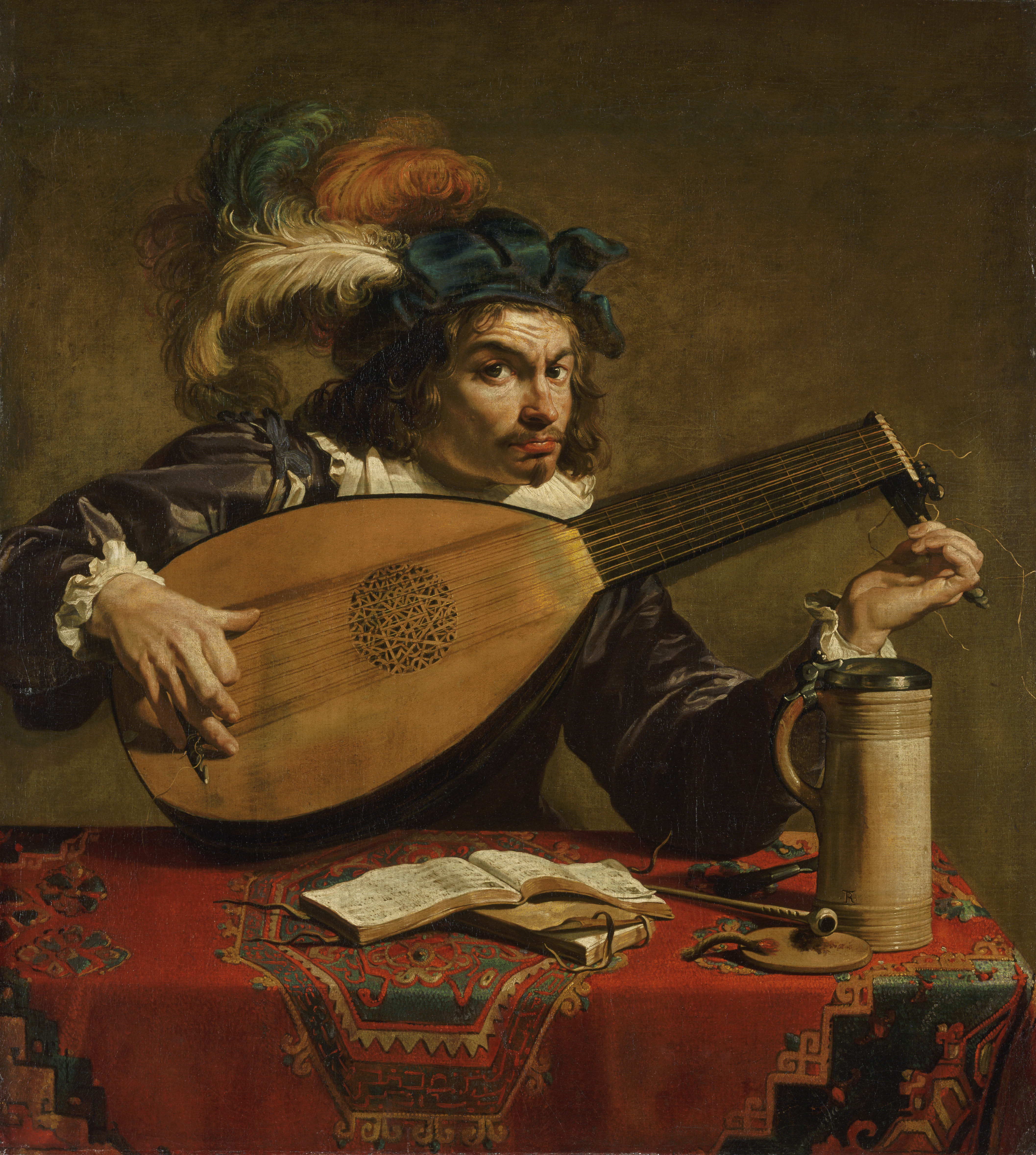Theodoor Rombouts Atelier, The toothpickcirca 1628, Oil on canvas, Ghent Museum of Fine Arts
The universe that populates the paintings of Theodoor Rombouts is alive, a virtuoso of Flemish Caravaggism, an eminent figure in the artistic environment of Antwerp, appreciated during his short life before his artistic legacy was eclipsed, swept away by the Baroque brushes of his fellow citizens Peter Paul Rubens and Anthony Van Dyck.
More than three centuries after his death in 1637 at the age of just forty, the Museum of Fine Arts in Ghent celebrates this painter’s talent by shedding light on his artistic originality and interpreting Rombouts’ work through an unprecedented lens.
From 21 January to 23 April, the public will be able to appreciate the first monographic exhibition dedicated to the painter known for his monumental, lively and sometimes moralizing genre scenes, which feature elegant groups of figures and musicians. These scenes are made according to the Manfrediana methodustechnique that takes its name from Bartolomeo Manfredi, one of the first exponents of Caravaggism, and conquer those who observe them for the chiaroscuro games, for the naturalism and the dramatic atmosphere, between close-ups and groups of half figures portrayed in shades of purple , red and blue.

Theodoor Rombouts, The butler (Allegory of Temperance), circa 1625 – 32, Oil on canvas, MUba Eugène – Leroy, Tourcoing
On the other hand, the son of a tailor, Rombouts has a marked sensitivity for fabrics and musical instruments, which he reproduces with extreme virtuosity. In the compositions studied by him, with a scenographic taste, the elegant atmosphere and refined costumes exalt the popular characters. Rombouts prefers to choose his own models directly, characters that he reproposes painting after painting. Sometimes he himself appears among the protagonists of his canvases, alternating with his wife or daughter.

Theodoor Rombouts, The Lute Player, c.1625, Oil on canvas, The John G. Johnson Collection Philadelphia Museum of Art
After the formative years alongside his Flemish colleague Abraham Janssen, the young Rombouts was in Italy at the beginning of the seventeenth century, influenced by the revolutionary genius of Caravaggio and by Bartolomeo Manfredi, one of the main exponents of Caravaggism. Back in Antwerp, he began to develop his artistic identity by reworking and sublimating the influences of the North and the South. From his atelier at the Meir, he indulged the wishes of the public, seducing them with his brushstrokes that let us glimpse the stylistic references of Rubens, then much loved by the commissioning.
Yet Rombouts, more than any other, captures with his compositions populated by cheerful characters and players, as well as with the monumental scenes, the allegories with hidden political messages.
To create the exhibition in Ghent, curated by Frederica Van Dam, and the catalogue, which sees Theodoor Rombouts take center stage for the first time, the Museum of Fine Arts in Ghent has carefully explored the work of the Antwerp painter by arriving in the Flemish city paintings from private collections, churches and museums from all over Europe and the United States, some of which have been restored for the occasion with the contribution of the museum. The result is an unprecedented overview of the artist who will reveal to visitors for the first time the heart of the painter’s work, in an open dialogue with contemporaries such as Bartolomeo Manfredi, Valentin de Boulogne, Hendrick ter Brugghen.

Theodoor Rombouts, Allegory of the Five Senses, 1632, Oil on canvas, Ghent Museum of Fine Arts © www.artinflanders.be | Photo: © Cedric Verhelst
A thematic installation will allow the public to savor all aspects of Rombouts’ painting in the exhibition, revealing the man beyond the work: an artist who lets himself be enchanted by the talent of his colleagues, but who at the same time develops an identity recognizable art both for the patrons of the time and for today’s spectators.
From 1860, date of purchase de The allegory of the five senses (1632), the first painting by the master to open the museum’s collection, a special link exists between the painter from Antwerp and the Museum of Fine Arts in Ghent. However, the museum holds in its collection two other paintings by Rombouts, theAllegory of the Gedele assembly (1627-28), Rombouts largest canvas, e The toothpick (ca. 1628), a typical Caravaggesque warning against scammers, which will be restored on the occasion of the exhibition.

